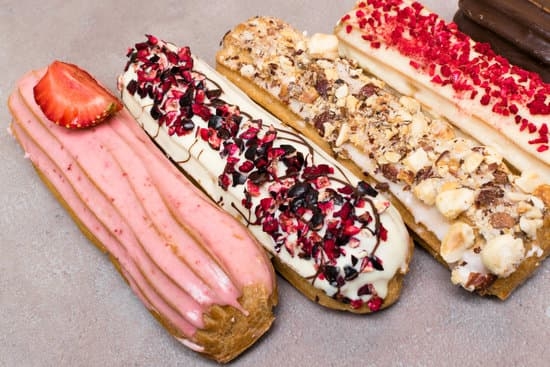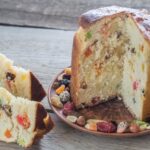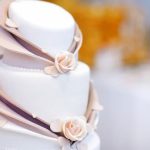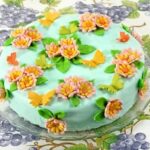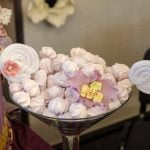Royal icing is a versatile and timeless decorating tool that can elevate any cake design to the next level. In this article, we will explore how to use royal icing to decorate cakes, from understanding the basics to mastering advanced techniques. Whether you’re a beginner or an experienced baker looking to enhance your skills, learning how to use royal icing can open up a world of creative possibilities.
Royal icing is a beloved choice for cake decorators due to its smooth finish, versatility in creating intricate designs, and ability to set firmly for long-lasting decorations. Using royal icing allows for precise detailing and professional-looking results that are sure to impress any occasion. From elegant weddings cakes to whimsical birthday treats, royal icing offers endless opportunities for creativity and personalization.
In the following sections, we will delve into the essential ingredients and tools needed to make royal icing, provide a step-by-step guide on achieving the perfect consistency, explore different techniques for decorating with royal icing, troubleshoot common issues that may arise during the process, and offer tips on storing leftover icing.
Whether you’re new to working with royal icing or looking to expand your repertoire of skills, this comprehensive guide will help you master the art of using royal icing to decorate cakes like a pro.
Ingredients and Tools Needed
Royal icing is a versatile and popular choice for decorating cakes due to its smooth finish and ability to hold intricate designs. To successfully use royal icing to decorate cakes, it is essential to have the right ingredients and tools on hand.
Ingredients
The basic ingredients needed to make royal icing include egg whites or meringue powder, powdered sugar, and water. Egg whites provide the structure for the icing, while powdered sugar sweetens and thickens it. Meringue powder can be used as a substitute for raw egg whites, offering convenience and peace of mind for those concerned about food safety. Additionally, flavor extracts can be added to enhance the taste of the icing.
Tools
In addition to the ingredients, several tools are necessary for working with royal icing. A stand mixer or hand mixer is essential for achieving the right consistency when making the icing. Piping bags and tips are crucial for creating different designs on the cake, such as borders, flowers, and intricate details. A turntable can make it easier to evenly apply royal icing to the cake’s surface, while offset spatulas are useful for spreading and smoothing out the icing.
Tips and Tricks
When using royal icing to decorate cakes, it is important to ensure that all tools are clean and dry to prevent contamination. Sift the powdered sugar before using it in the recipe to avoid lumps in the icing. Gradually add water to achieve the desired consistency – a thicker consistency is suitable for piping intricate details, while a thinner one works well for flooding larger areas of the cake.
Experiment with different piping tips and techniques to create unique designs tailored to your preferences. With practice and patience, you can master how to use royal icing to decorate cakes beautifully every time.
Step-by-Step Guide to Making Royal Icing
Royal icing is a versatile and popular choice for decorating cakes due to its smooth finish and ability to hold intricate designs. Making royal icing from scratch is easier than you may think, and with the right guidance, you can achieve the perfect consistency for your cake decorations. To get started on using royal icing to decorate your cakes, follow this step-by-step guide that includes essential tips and tricks for success.
To make royal icing, you will need just a few simple ingredients: confectioners’ sugar (powdered sugar), egg whites or meringue powder, and water. The tools required include a mixing bowl, electric mixer or stand mixer, spatula, piping bags, and various piping tips for different designs. Begin by sifting the confectioners’ sugar to ensure a smooth texture in your icing.
Next, in the mixing bowl, combine the sifted confectioners’ sugar with either lightly beaten egg whites or reconstituted meringue powder according to the package instructions. Start mixing on low speed until the ingredients are combined before increasing the speed gradually until stiff peaks form. Adjust the consistency by adding small amounts of water until you reach your desired thickness – a thicker consistency works well for piping detailed designs while a thinner consistency is ideal for flooding large areas.
To test if your royal icing is at the right consistency for decorating cakes, run a spoon through it – if the lines disappear within 10 seconds, it’s ready to use. Remember that royal icing dries quickly when exposed to air, so cover bowls with plastic wrap when not in use to prevent crusting.
With this guide on making royal icing down pat, you’re now ready to move on to preparing your cake for decoration and creating stunning designs using this versatile frosting.
Preparing the Cake for Decoration
When preparing a cake for decoration with royal icing, it is crucial to ensure that the surface is smooth and even to achieve the best results. One of the first steps in this process is leveling the cake. Using a serrated knife or a cake leveler, carefully trim off any domed top to create a flat surface. This not only helps in enhancing the aesthetics of the final design but also allows for easier application of the royal icing.
After leveling the cake, it is recommended to apply a crumb coat. A crumb coat is a thin layer of icing applied to seal in any loose crumbs on the cake’s surface before adding the final layer of royal icing.
To do this, spread a thin layer of royal icing over the entire cake using an offset spatula. Chill the cake in the refrigerator for about 15-20 minutes to allow the crumb coat to set before proceeding with decorating.
Tips for Achieving a Smooth Finish
To achieve a smooth finish on your cake before decorating with royal icing, consider using a bench scraper or an icing smoother. Run either tool along the sides and top of the cake while rotating it on a turntable for an even surface. This step helps in creating a clean canvas for your royal icing decorations and ensures that they adhere smoothly without any bumps or imperfections.
Creating Sharp Edges
For cakes that require sharp edges, use acetate strips or flexible plastic sheets around each side of the cake when applying and smoothing out the royal icing for decoration. These tools help in achieving crisp lines and defined edges on your finished design. Additionally, freezing or chilling your cake after applying royal icing can also help in maintaining sharp edges and preventing any smudging or smearing during decorating.
Techniques for Decorating With Royal Icing
Royal icing is a versatile and popular choice for decorating cakes due to its smooth finish and ability to hold intricate designs. To create beautiful decorations on cakes using royal icing, it is important to master various techniques such as piping, flooding, and marbling. Each technique offers a unique way to add flair and creativity to your cake designs.
Piping is one of the most common techniques used with royal icing. To pipe with royal icing, fill a piping bag fitted with a small round tip with the desired consistency of icing. Hold the bag at a 45-degree angle to the surface of the cake and apply gentle pressure to create details such as swirls, dots, or intricate designs. Practice different pressure levels and piping speeds to achieve varying effects.
Flooding is another popular technique that involves covering larger areas of the cake with a smooth layer of royal icing. To flood with royal icing, start by outlining the area you want to cover with a thicker consistency of icing using piping. Then, thin down the remaining icing with water until it reaches a runny consistency to fill in the outlined area smoothly. Use a toothpick or small spatula to spread the icing evenly before it sets.
Marbling with royal icing creates stunning and unique patterns on cakes. To marble with royal icing, pipe different colors of thinned icing onto the cake in random patterns or lines. Then, use a toothpick or skewer to gently swirl the colors together for a marbled effect. Experiment with different color combinations and swirling techniques to achieve captivating designs on your cakes.
| Royal Icing Decorating Techniques | Description |
|---|---|
| Piping | Create intricate designs and details on cakes by piping royal icing using various tips. |
| Flooding | Cover larger areas of cakes smoothly by outlining and filling in with runny royal icing. |
| Marbling | Produce unique patterns on cakes by swirling different colored icings for marbled effects. |
Troubleshooting Common Issues
When working with royal icing to decorate cakes, it is common to encounter some issues that can affect the outcome of your creation. One of the most common problems when using royal icing is air bubbles forming in the icing while piping or flooding a design onto the cake.
To prevent this issue, make sure to tap the icing bag on a flat surface after filling it and before starting to pipe. Additionally, gently squeeze out any air bubbles that may have formed in the bag before decorating.
Another issue that may arise when using royal icing is inconsistent consistency, which can lead to difficulties in piping or flooding designs onto the cake. To ensure a smooth and consistent flow of icing, always check the thickness of your royal icing before starting to decorate.
If the icing is too thick, add a small amount of water until it reaches the desired consistency. On the other hand, if the icing is too thin and runny, add more powdered sugar until it thickens up.
Color bleeding is another common problem that can occur when using royal icing to decorate cakes, especially when creating intricate designs with multiple colors. To prevent colors from bleeding into each other, make sure to allow each color layer to dry completely before adding additional colors on top.
Additionally, avoid overmixing different colored icings together as this can cause them to blend and lose their distinctiveness. By being mindful of these tips and tricks for troubleshooting common issues with royal icing, you can create stunning and flawless decorations on your cakes every time.
Storing and Shelf Life
When it comes to using royal icing to decorate cakes, one important aspect to consider is how to store leftover royal icing and the shelf life of the decorated cakes. Proper storage techniques can help preserve the quality of both the icing and the cake itself. Here are some tips on how to store leftover royal icing and ensure that your decorated cakes last as long as possible:
- Store leftover royal icing in an airtight container: Once you have finished decorating your cake, any leftover royal icing can be stored for future use. Make sure to transfer the icing into an airtight container to prevent it from drying out.
- Refrigerate or freeze royal icing: Depending on when you plan to use the remaining royal icing again, you can choose between refrigerating or freezing it. Royal icing can be kept in the refrigerator for up to two weeks, while freezing it can extend its shelf life up to three months.
- Check the consistency before reusing: Before using any leftover royal icing that has been stored, make sure to check its consistency. You may need to re-whip it slightly or add a few drops of water if it has thickened during storage.
Understanding how long decorated cakes with royal icing can last is also essential. While royal icing itself has a long shelf life due to its sugar content, the cake underneath may not stay fresh for as long. To prolong the shelf life of decorated cakes:
- Wrap the cake properly: If you are not serving all of the decorated cake at once, make sure to wrap it tightly with plastic wrap or place it in an airtight container. This will help prevent any air exposure that could dry out the cake.
- Store in a cool, dry place: Keeping decorated cakes in a cool and dry place will help maintain their freshness for longer periods. Avoid exposing them to direct sunlight or high temperatures, as this can cause the decorations to melt or discolor.
- Consider refrigeration: If your cake has perishable fillings or ingredients, such as cream cheese frosting, it is best to store it in the refrigerator. Be mindful of any condensation when taking it out so as not to ruin the delicate designs made with royal icing.
By following these tips on storing leftover royal icing and extending the shelf life of decorated cakes, you can ensure that your decorative creations look and taste their best for as long as possible.
Inspiration and Ideas
When it comes to decorating cakes with royal icing, the possibilities are truly endless. One of the most exciting aspects of working with royal icing is the ability to create stunning designs that can elevate any cake to a work of art. Seasonal themes are particularly popular when it comes to cake decorating, as they allow you to showcase the colors and motifs associated with different times of the year.
For example, during the fall season, you can use rich shades of red, orange, and yellow to create a beautiful autumnal design on your cakes. Consider piping intricate leaves or pumpkins onto your cakes using royal icing for a festive touch. In the winter months, snowflakes, holly berries, and other winter-inspired designs can add a touch of magic to your cakes.
For spring and summer, bright pastel colors and floral motifs are always a hit. Consider using royal icing to pipe delicate flowers such as daisies or roses onto your cakes for a fresh and vibrant look. Whether you’re celebrating a holiday or simply want to add a seasonal flair to your dessert table, using royal icing to decorate your cakes is a fun and creative way to express yourself through baking.
Experimenting with different designs and themes is part of the joy of cake decorating with royal icing. Don’t be afraid to get creative and try new techniques – you might just discover a hidden talent for edible art. So next time you’re planning to bake a cake for a special occasion or just want to indulge your sweet tooth, consider incorporating royal icing into your decorating process for an eye-catching and delicious treat.
Conclusion
In conclusion, royal icing is a versatile and popular choice for decorating cakes due to its smooth finish and ability to hold intricate designs. By following the step-by-step guide provided in this article on how to make royal icing and properly prepare a cake for decoration, anyone can achieve professional-looking results. Whether you are a beginner or an experienced baker, experimenting with different techniques like piping, flooding, and marbling can help elevate your cake decorating skills.
For those who may encounter common issues when using royal icing, such as inconsistency in texture or air bubbles, the troubleshooting tips mentioned in this article can provide helpful solutions. It is essential to store leftover royal icing correctly to prolong its shelf life and maintain its quality for future cake decorating projects.
Remember that practice makes perfect when it comes to using royal icing, so do not be discouraged by initial challenges – keep exploring new ideas and designs to enhance your skills.
In the end, the key takeaway from this blog post is the encouragement for readers to try their hand at using royal icing to decorate cakes. With inspiration and ideas provided throughout the article, there are endless possibilities for creating beautifully decorated cakes for any occasion. So grab your ingredients and tools, follow the guide outlined here on how to use royal icing to decorate cakes, and unleash your creativity in the world of cake decorating.
Frequently Asked Questions
How Do You Harden Royal Icing on a Cake?
The key to hardening royal icing on a cake is to allow it enough time to dry completely. Once you have piped or spread the icing onto the cake, it needs to sit undisturbed for several hours or even overnight. This will ensure that the icing sets and hardens properly.
How Do You Frost With Royal Icing?
Frosting with royal icing requires a steady hand and some patience. To begin, make sure your cake is fully cooled before applying the icing. Use a piping bag or offset spatula to apply the royal icing in smooth, even strokes. Work quickly but carefully to avoid any lumps or bumps in the frosting.
How Do You Keep Royal Icing From Cracking?
To keep royal icing from cracking, there are a few things you can do. First, make sure your icing is not too thick – if it’s too stiff, it can crack as it dries. Adding a little extra water during mixing can help achieve the right consistency.
Secondly, avoid exposing the icing to sudden temperature changes, as this could cause cracks to form while drying. Lastly, storing your finished iced cakes in a cool, dry place can also prevent cracking as the icing sets over time.

Welcome to our cake decorating blog! My name is Destiny Flores, and I am the proud owner of a cake decorating business named Cake Karma. Our mission is to provide delicious, beautiful cakes for all occasions. We specialize in creating custom cakes that are tailored specifically to each customer’s individual needs and tastes.

